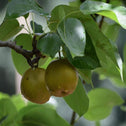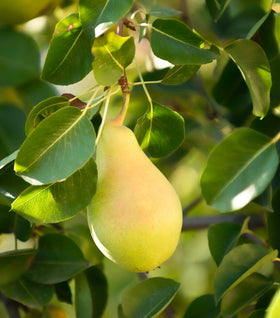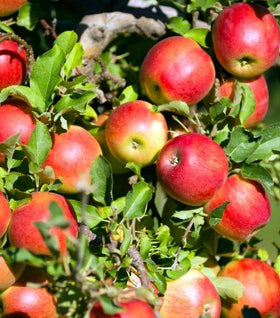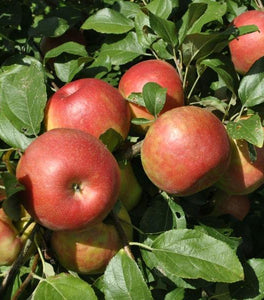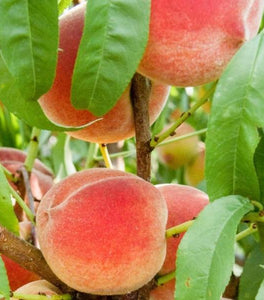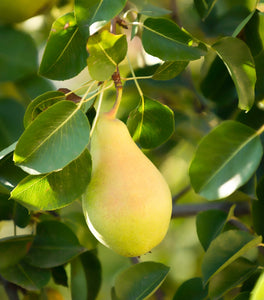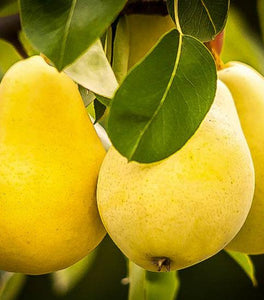Images Depict Mature Plants
Kikusui Pear Trees for Sale Online
The Kikusui Asian pear, also known as the floating chrysanthemum Asian pear, is known for its sweet-tart flavor and flat, chubby fruits. The flesh is creamy white, sweet with just a touch of tartness, and quite firm. The skin is very delicate and bruises easily so this pear doesn’t have a good reputation shipping, which is why you'll rarely see this jewel in grocery stores.
The Kikusui pear tree was brought to the United States during the California Gold Rush in the 1850s. This cute little fruit has a beautiful name that means “Chrysanthemum Floating in Water.” The floating chrysanthemum is also the crest of the Japanese royal family.
| Hardiness Zone: | 5-9 |
|---|---|
| Mature Height: | 12 to 15 feet |
| Mature width: | 12 to 15 feet |
| Classification: | Broad leaved deciduous tree, spring flowering |
| Sunlight: | Full sun |
| Habit: | Spreading, umbrella shaped canopy |
| Foliage: | Dark green |
| Fruit Color: | Yellow |
| Pruning Season: | Late winter |
| Soil Condition: | Any well drained soil |
| Water Requirement: | Water well until established |
| Uses: | One of the best pears for eating fresh |
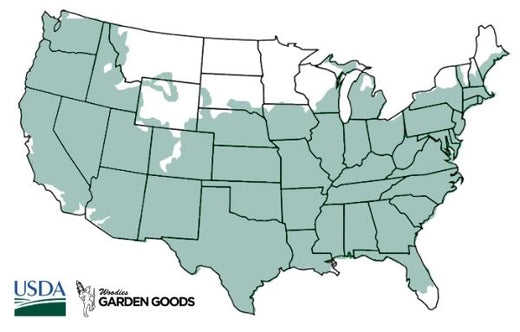
How to Care for Kikusui Pear Tree
Be sure to read our planting instructions to ensure a healthy and happy plant for years to come!
What's the best way to plant my Asian Pear Tree?
We suggest when planting your newly purchased Kikusui Pear Tree that you dig a hole twice as wide as the root system but not deeper. Depending on the quality of your existing soil you may need to add a locally sourced compost or topsoil to the back-fill soil. We do not recommend using straight topsoil or compost as a back-fill soil because they could retain too much moisture and cause root rot. Adding a compost or topsoil mix will help the young feeder roots of Kikusui Pear Tree to spread through the loose, nutrient-rich soil, much easier than if you used solely the existing soil, which can be too compacted. The most common cause of plant death after transplanting is planting the new plant too deep. That is why we do not recommend planting in a hole any deeper than the soil line of the plant in the pot. A good rule is that you should still be able to see the soil the plant was grown in after back-filling the hole.
How should I water a Kikusui Pear Tree?
After backfilling and lightly compacting the 50/50 mix of existing soil and compost give the Kikusui Pear Tree a good deep watering. This is not to be rushed. Most of the water you put on the plant at first will run away from the plant until the soil is soaked. A general rule of thumb is to count to five for every one gallon of pot size. For example, a 1 gallon pot would be watered until you count to five, a 3 gallon pot would be a count of fifteen, and so on. Check the plant daily for the first week or so and then every other day thereafter. Water using the counting method for the first few weeks. Gator Bags are a good investment that will help minimize the watering chore.
When should I fertilize a pear tree?
Trees such as Kikusui Pear Tree grow best if they are fertilized lightly in the spring once frost has passed with a well-balanced, extended-release, fertilizer such as Espoma Tree-tone. Kikusui Pear Tree again 6 to 8 weeks later to encourage denser foliage or faster growth of young trees. We recommend Bio-Tone fertilizer when planting. Either chemical fertilizers or organic matter can be used successfully with Kikusui pear tree. An excellent first line of attack would be an organic method of applying manure and/or compost around the roots. This produces excellent results and also improves the condition of the soil. Organic additions to the soil can also be combined with a shot of chemical fertilizer for maximum effect.
Why should I use mulch when planting a fruit tree?
Mulching helps to keep weeds away which will compete with your new investment for water and nutrients. It also will help the roots maintain an even temperature, so they don't get too hot or too cold. We highly recommend that you mulch your Kikusui Pear Tree with either a ground hardwood mulch or a ground cypress mulch, depending on your local availability. Any type of mulch will do but cypress or hardwood mulch will be of a higher quality and provide better nutrition overall as they breakdown. A 2 to 3 inch layer of mulch is sufficient, but remember to take care not to cover any part of the stem of the plant with mulch. It's better to leave a one inch gap of space between the mulch and the stem or trunk of the plant.





